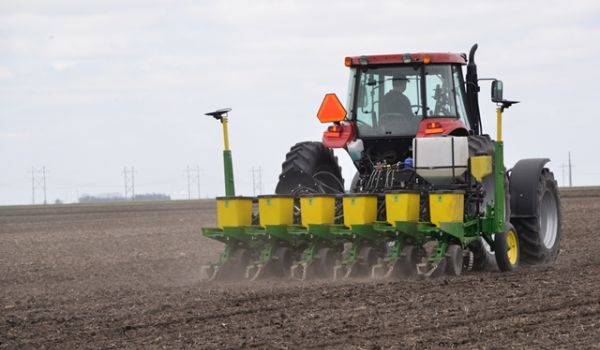Planting Speed Matters

As an agronomist, I hear a lot of excuses about why farmers don’t perform winter maintenance on their planters. And I hear even more excuses about why they don’t plant slower in the spring.
When I started my agronomy career, the excuses were pretty simplistic – “If it takes grease, it’s good to go.” However, as technology has become more complicated, the excuses for not doing the right thing have also evolved. I’m now hearing things like, “I have technology on my side (Precision Planting meters), and technology doesn’t need to be checked.”
I’ve compiled a list of the Top 10 excuses I hear every spring:
10. I have technology on my side (Precision Planting meters); and technology doesn’t need to be checked.
9. If it takes grease, it must be good to go.
8. It worked when I put it in the shed last year.
7. As long as you soak the drive chains in oil, they’ll be good for another year.
6. It was “field ready” when I picked it up at the dealership.
5. A weather system was coming in, so I had to drive faster to finish.
4. I have always planted at 5 or 6 mph.
3. If the planter carries, it should be ready to plant.
2. That monitor light is always blinking. It must be broken.
1. My dad and grandpa always did it this way.
This litany of Top 10 excuses makes my blood boil because they result in poor stands. And I want to draw attention to how silly these things actually are.
I believe with every fiber of my being, that planter maintenance is essential to ensure a successful crop. In the offseason, look over your planter with a fine tooth comb. Replace what needs to be replaced, and make necessary calibrations. There is no such thing as “good enough for this year”. Fix it, or don’t plant with it!
Once your planter is ready, take your time when planting. In nine years of Peterson Farms Seed’s Ole & Sven research trials, we have shown a 9.3 bushel advantage when planting at speeds under 5 mph. Planting speed is the single most important thing you can control to ensure a good stand. And it is frequently overlooked. The planter needs to singulate correctly and minimize seed bounce when it hits the soil–and it needs to be moving slowly in order to do that.
Patience is not one of my strong suits, but in order to give the seed the best start possible, precision and expertise are the keys. Good things take time. There are enough variables that you won’t be able to control in the upcoming season. Be sure to give your crop the best start possible by reducing your speed to ensure a great stand.
For example, put yourself in the shoes of a cardiologist about to perform open heart surgery. Before you head into the operating room, you make sure everything is in the right spot to be efficient and successful. You are precise, and you do not rush. Many hours later when you are finished with the surgery, everyone asks, “What took you so long?” Your reply? “Well, I only get one shot at this, and I did it right. I chose to do it correctly instead of fast and sloppy.”
When it comes to planting corn, or any crop for that matter, take your time. You only get one chance each year. Do it right. And make it count.



